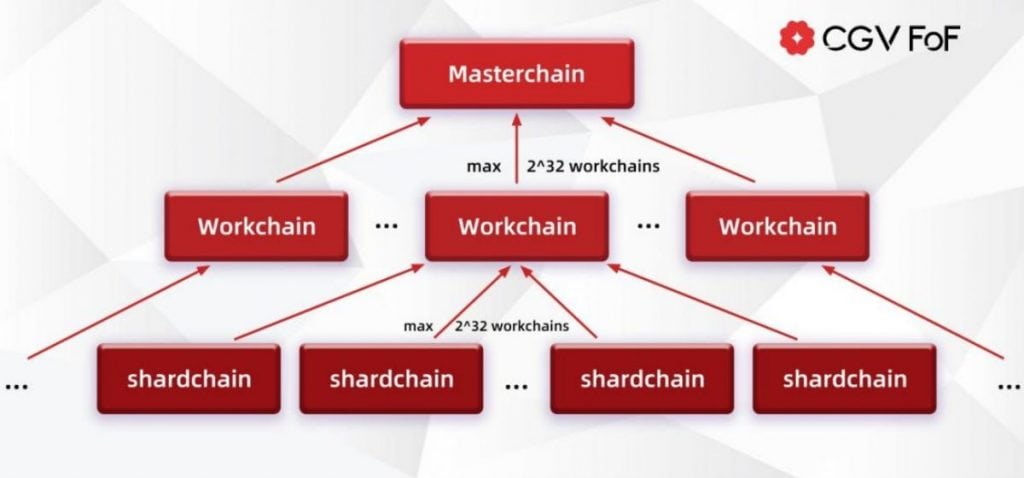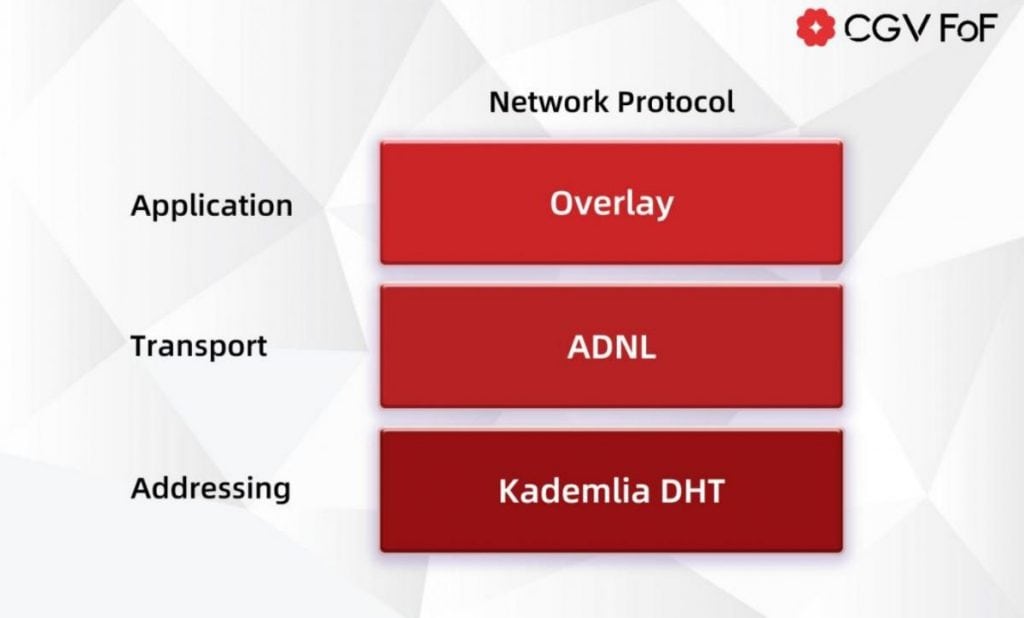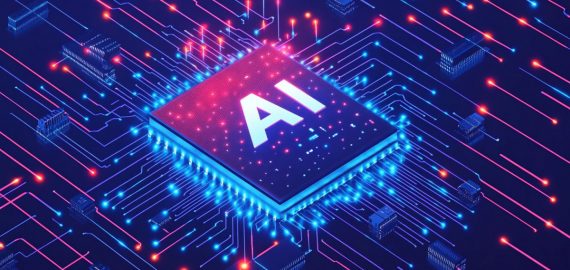CGV Research: Telegram Open Network’s (TON) Technological Advancements and Future Prospects



TL;DR
- TON’s History: Telegram, founded by the Durov brothers, embarked on the development of its own blockchain – Telegram Open Network (TON) in 2018, aiming to meet the demands of its billion-user base. Through the Initial Coin Offering (ICO) of its token $Grams, TON raised over $1.7 billion. However, in 2019, due to a lawsuit from the U.S. Securities and Exchange Commission(SEC), Telegram abandoned further development of TON. Nevertheless, between 2020 and 2021, the NewTON team (now TON’s core team) resurrected TON development based on open-source materials, successfully rebranding it as The Open Network.
- Technical Features of TON: TON is tailored for massive user communities. It distinguishes itself by employing sharding technology, enabling multiple chains to process transactions in parallel, referred to as the “blockchain of blockchains”. TON’s architecture comprises three layers: masterchain, workchain, and shardchain. The masterchain serves as the coordinating hub, while actual transaction processing is handled by various workchains and shardchains. Additionally, TON’s sharding is dynamic, allowing for the aggregation of Shardchains into larger ones based on interaction patterns between accounts.
- Network Structure of TON: TON nodes communicate using the Abstract Datagram Network Layer (ADNL), providing the foundation for interactions between different Shardchains. By leveraging the Kademlia Distributed Hash Table (DHT) to locate other nodes in the network, TON has also established Overlay sub-networks specific to each Shardchain, ensuring effective communication.
- Applications and Prospects of TON: TON’s purpose extends beyond fundraising, aiming to establish a decentralized, secure, and reliable internet. Features like TON eSIM, TON domains, and TON storage are designed to enhance user privacy and data security. While current demand for decentralization might not be high, TON has allocated substantial funds for its ecosystem and, with its massive user base, is poised to attract attention and grow in the future.
- Despite facing challenges upon its initial launch, TON continues to garner attention in the blockchain field due to its innovative technology and vision for a decentralized future network. Its robust financial backing and extensive user community lay a solid foundation for its future development.
TON’s Past
In 2018, founders of Telegram — the Durov brothers, began exploring blockchain solutions suitable for Telegram. At that time, no existing blockchain could support Telegram’s billion-user community, so they decided to design their own Layer 1 chain, naming it Telegram Open Network, or TON for short.
A few months later, through an Initial Coin Offering (ICO) of TON’s native token $Grams, TON raised over $1.7 billion. In 2019, the Telegram team released relevant documents and successively launched two testnets.
In October 2019, the U.S. Securities and Exchange Commission (SEC) filed a lawsuit against Telegram, accusing it of conducting an unregistered securities offering. The Telegram team halted the mainnet launch of TON and eventually chose to give up the project in their battle with the SEC, returning the ICO funds to investors.
Between 2020 and 2021, the NewTON team (now TON’s core team) resurrected TON’s development based on open-source materials. In May 2021, the community decided to rename the long-running Testnet 2 to Mainnet. The NewTON team was also renamed the TON Foundation, serving as a non-profit community to support and develop TON.
The TON is now officially recognized as The Open Network.
Technical Features of The Network
From the very beginning, TON was designed for social networks with a massive user base. The TON Blockchain serves as the foundation for Telegram blockchain. Back then, with the outdated technological framework, mainstream blockchain’s TPS (transactions per second) couldn’t achieve significant improvement. The question arose: How could it effectively handle Telegram’s billion-user count and the potential for processing millions of transactions per second?
The TON team’s idea was that a single blockchain’s TPS could only reach a few tens of transactions per second, so why not create multiple chains. TON employs sharding technology, distributing the workload of processing transactions across multiple chains, forming a blockchain network composed of multiple blockchains, referred to as a “blockchain of blockchains”.
To be specific, TON Blockchain adopts a pyramid-shaped three-layer architecture, with each layer accommodating a type of blockchain: masterchain, workchain, and shardchain.

Masterchain serves as the central coordinator for TON Blockchain, and there is only one of its kind. This chain encompasses protocol parameters, a collection of Validators, corresponding shares, the current operational Workchains and their respective Shardchains. Lower-level chains submit their latest block hashes to the Masterchain, enabling the determination of the most recent state when cross-chain message retrieval is required.
Masterchain acts as a coordinator and anchor, while the actual work is carried out by individual Workchains. The system can accommodate up to 2^32 Workchains. Each Workchain, meeting interoperability standards, can flexibly customize rules such as address format, transaction types, native tokens, and smart contract virtual machines. It’s important to note that Workchain is a virtual concept; it exists as a collection of Shardchains and has no physical entity.
To enhance processing efficiency, each Workchain is further divided into Shardchains, with a maximum of 2^60. Shardchains adhere to the rules set by their parent Workchain, distributing the workload among all Shardchains. Each Shardchain serves only a portion of the collective accounts.
In typical sharding, the division is top-down, often based on account address prefixes. For instance, if a Workchain is evenly divided into 256 shards, accounts with address prefixes like 0x00, 0x01, …… 0xFE, 0xFF would be distributed across different Shardchains.
For TON’s sharding mechanism, it’s a dynamic bottom-up process. Initially, each account is considered as a separate Shardchain, and then they are combined based on their interactions to form larger Shardchains, ensuring each Shardchain has a sufficient number of transactions.
Now, looking back at the architectural diagram of TON Blockchain, do you see some similarities with network architecture?
We have reason to believe that the Durov brothers, with their background in networking, were inspired by network architecture in the design of TON. In the initial scenario, each network device operates independently as a single point (each account as a separate Shardchain). Due to frequent communication between some network devices, they are grouped into a local area network (combining individual Shardchains into larger ones). Different local area networks communicate with each other through higher-level nodes (interoperating between Shardchains through the Masterchain).
TON Blockchain essentially embodies the core concept of “TON of the network,” presenting itself as an alternative network.
TON’s Network Structure
As a distributed system, blockchain requires nodes to communicate through a P2P network rather than relying on centralized servers and client-server architecture. For monolithic blockchains like Bitcoin and Ethereum, spreading blocks and transactions through gossip protocols suffices.
However, for TON, the multi-chain architecture places higher demands on network protocols.

TON nodes utilize the Abstract Datagram Network Layer (ADNL) for data transmission, abstracting the network layer in the traditional TCP/IP layered architecture. To facilitate identity recognition, nodes communicate using Abstract Network Addresses instead of considering IP addresses. These addresses are 256-bit integers, derived from ECC public keys and other parameters’ hashes, facilitating communication encryption and decryption between nodes, providing the foundation for segmentation between different Shardchains.
TON employs the Kademlia Distributed Hash Table (DHT) to locate other nodes in the network. When a client needs to submit a transaction to a Validator on a specific Shardchain, it can use a key to look up and retrieve the Validator’s location in the DHT.
The crucial part lies in the Overlay network. Since different Shardchains operate independently and have no interest or capability to handle transactions on other Shardchains, it’s necessary to construct an Overlay sub-network for each Shardchain within the TON Network, open to nodes wishing to engage in communication. The Overlay network communicates internally using a gossip protocol based on ADNL.
With its distinctive network protocol design, addressing, transmission, and application finalized, TON achieves an infinitely sharded scheme, attaining exceptionally high Transactions Per Second (TPS). This embodies TON’s essence as “TON by the network”.
Applications and Future Prospects of TON
In today’s era of “myriads of chains,” for a public blockchain to stand out, it must play to its strengths and distinguish itself. Ethereum’s strength lies in TVL and its application ecosystem, Solana boasts a vast developer community and Arbitrum excels in technical reliability and operational capabilities. TON Blockchain currently occupies a relatively new but rapidly rising position in the blockchain market, and it needs to set itself apart with its unique multi-chain architecture and high scalability.
Firstly, its technical foundation positions it as a highly flexible and scalable platform. Thanks to its innovative multi-chain architecture, it can effortlessly handle a large volume of transactions, addressing scalability issues faced by many other blockchains.
Secondly, TON’s close integration with Telegram gives it a competitive edge. Telegram’s massive user base provides TON with a substantial potential user pool, which is a distinct advantage that many emerging blockchains don’t have.
However, it also faces some challenges. Other blockchain projects have established large communities and ecosystems, so TON needs to continuously work on attracting developers and users. Additionally, it needs to compete with other blockchains that offer powerful features and innovative solutions, which means it must keep innovating to maintain its competitive edge.
In the competition with other mainstream blockchains, TON must prove its technical superiority and practicality, which will be crucial for its future development. By demonstrating the security, speed, and efficiency of its system, it may attract more enterprise and individual users.
Overall, TON Blockchain is in a highly competitive and dynamic market environment. While it has some notable advantages, it still needs to prove its worth, especially in a market where many mature and successful projects already exist.
So, what are TON’s strengths? As various scaling solutions mature and become operational, “high performance” is no longer the sole determining factor for a chain’s success.
How does TON maintain the vitality of its ecosystem? CGV Research believes there are two directions: social networks and network services.
Looking at the social network aspect, one only needs to consider the demands users have while using Telegram. There is a significant amount of transaction settlements on Telegram, leading to TON payment. Its operation is similar to the Bitcoin Lightning Network, and the integrated wallet in Telegram reduces the entry barrier. Users also have a demand to showcase their artistic aesthetic, which TON NFT serves as an excellent social tool. Engaging in games with friends is one of the most enjoyable activities, so GameFi can undergo rapid expansion through social networks.
Network services are TON’s core expertise, as it has re-engineered everything from traditional networks, shaping what is referred to as the future of the internet. The anonymous eSIM realizes Telegram’s initial vision: a privacy-protecting social network.
TON domains enhance readability, making it easier for users to find each other in the TON network. TON addresses, TON proxies, TON WWW aim to provide a decentralized, secure, and reliable internet for everyone. TON storage is an upgraded version of Torrent, ensuring the safety of user data through decentralized storage.
TON employs blockchain technology not only to raise funds but also to build a more decentralized, secure, and reliable internet. This embodies TON’s essence as “TON for the network.”
Conclusion
Unfortunately, judging by the current level of activity in the TON ecosystem, it seems that there aren’t too many users in need of a more decentralized, secure and reliable internet. This is a challenge faced by all blockchain projects at present. Most people enter the blockchain ecosystem in pursuit of financial gains rather than a genuine need for decentralized services. Without the wealth-creating effect, projects find it challenging to sustain ongoing attention.
Fortunately, the TON ecosystem isn’t lacking in funds. TON has established an ecosystem fund of several hundred million dollars, dedicated to investing in and incubating projects within the TON ecosystem. With the largest monthly active user count in the entire Web3 world, we have reason to believe that the future of the TON ecosystem will experience a surge, making it worthy of sustained attention.
About Cryptogram Venture (CGV):
Cryptogram Venture (CGV) is a compliant and qualified research and investment institution in the crypto industry, headquartered in Japan. With a business focus on “research-driven investment,” they have participated in early-stage investments in multiple well-known projects. CGV plays an important role in projects regulated by the Japanese government, such as the JPYW stablecoin, and collaborates with numerous funds including Huobi Venture, Rocktree Capital, Cryptomeria Capital, and others.
Disclaimer:
The information and materials presented in this article are sourced from public channels, and our company makes no guarantees regarding their accuracy and completeness. Descriptions or forecasts of future situations are forward-looking statements, and any suggestions and opinions provided are for reference only and do not constitute investment advice or implications for any individual. The strategies that our company may adopt could be the same, opposite, or unrelated to the strategies inferred by readers based on this article.
Read more related topics:
Disclaimer
In line with the Trust Project guidelines, please note that the information provided on this page is not intended to be and should not be interpreted as legal, tax, investment, financial, or any other form of advice. It is important to only invest what you can afford to lose and to seek independent financial advice if you have any doubts. For further information, we suggest referring to the terms and conditions as well as the help and support pages provided by the issuer or advertiser. MetaversePost is committed to accurate, unbiased reporting, but market conditions are subject to change without notice.


CryptogramVenture FoF Asian アジアの暗号化資産ベンチャーファンドオブファンズ



















































